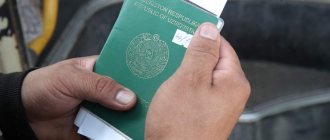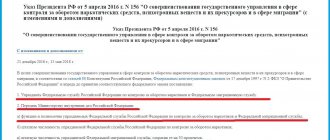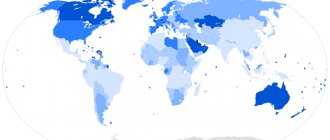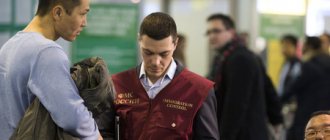Events / Migration policy
Over the past quarter century, the composition of migrant children in Russia has changed greatly. In the early 1990s, these were children of refugees, then children of labor migrants appeared, among whom in recent years there have been an increasing number of children from Central Asia. The composition of their families is also changing: migrant families with one parent have been added to two-parent families of migrants with children. Children arrive in Russia not only with their parents, but also with more distant relatives.
Despite the creation of the Central Data Bank for registering foreign citizens and stateless persons temporarily staying and temporarily or permanently residing in Russia, there are serious problems with statistics on migrant children. Even information on the number of children in Russian schools who do not have Russian citizenship is not systematically collected.
Migrant children differ from children of Russian citizens in terms of access to education, medical care and social services. They experience difficulties in mastering the Russian language, adaptation and integration in Russia, and after graduating from school, their lack of Russian citizenship becomes one of the main factors hindering their working career and access to further education.
The presence of migrant children in Russian schools is becoming a factor of concern for parents of children of Russian citizens, who fear a decline in the quality of education due to such children’s poor command of the Russian language.
Migrant children in Moscow adapt mainly during their studies in Moscow schools. But studies, including those conducted by the author, show that a significant proportion of children in Moscow do not study, but work. The impossibility of legal employment under 18 years of age under current Russian legislation, as well as the presence of a shadow economy in Russia, reduce the controllability of migration processes and labor exploitation of migrant children.
Number of children without Russian citizenship
It is difficult to even roughly estimate how many children without Russian citizenship there are now in Russia or its individual regions. According to the Center for Migration Research in 2011, about a third of female migrants lived in Russia with minor children, while 75% of preschoolers could not be placed in kindergarten, and at least 10% of school-age children did not attend school. According to official estimates by the Federal Migration Service, in 2011 women made up 14% of the labor migration flow in Russia, but, according to expert estimates, their real share was at least 25–30%. Thus, if the number of labor migrants, according to expert estimates, was 5–6 million, then among them there were from 1.25 million to 1.8 million female migrants. From 412 thousand to 594 thousand of them lived in Russia in 2011 with at least one child.
It was children from the CIS countries that began to make up the bulk of the foreign school population (at least 90%) and it was thanks to them that the number of foreign students in Russia and their share in the total number of Russian schoolchildren began to increase rapidly since the late 1990s (from 21 thousand in 2000 to approximately 145 thousand in 2015). Most of them studied in Moscow schools (more than 50 thousand people).
According to the Federal Migration Service, in 2021, of the legal foreign migrants who entered Russia during the year, 1.1 million were persons aged 0 to 17 years.
Research by the Center for Sociological Research under the Russian Ministry of Education and Science in 2011 on homeless and street children showed that almost half of them in Moscow (45%) turned out to be children without Russian citizenship from the CIS countries. This is the highest figure among all regions of Russia.
The latest study of the problems of protecting the rights of stateless children by the Center for Migration Research was conducted in Moscow in 2017, commissioned by the Commissioner for Human Rights in Moscow. The sample included 529 parents from 21 countries (Table 1).
Access to education
38% of respondents have free access to a state kindergarten; 44% of respondents do not go to kindergarten. Of 11% of parents surveyed, only a portion of their preschool-age children go to kindergarten. When looking at countries, we see that children from Syria (80% of them cannot get into kindergarten), Afghanistan (77% of them cannot get into kindergarten) and Azerbaijan (63% of them cannot get into kindergarten) have the worst access to kindergarten. they cannot go to kindergarten). Children from Moldova have rather difficult access (49% of them do not have access to kindergarten, 38% have, 5% have partial access) and Armenia (47% of them do not have access to kindergarten, 26% have, and 10% have access only for part of the preschool children in the family). Children from Uzbekistan (59% of them go to kindergarten, while 31% of children do not), Ukraine (59% versus 18%), Tajikistan (51% versus 24%) and Kyrgyzstan have much better access to kindergarten. (51% vs. 16%).
Moscow schools are more accessible for non-Russian children than kindergartens (Table 2). 83.3% of surveyed parents have children who go to school, 14.9% have children who do not go to school, 0.6% previously studied but are not studying now, and 0.8% have children who come only in their free time from school .
The most serious problem with enrolling children in school exists mainly among citizens of the same countries as in the case of kindergartens. The greatest problems in learning due to poor knowledge of the Russian language are experienced by children from foreign countries (Congo (25%), Syria (14%), Afghanistan (13%)), as well as children from Tajikistan (21%), Azerbaijan ( 15%) and Uzbekistan (7%).
Migrant children's work
The study showed that every tenth family surveyed has working children; in fact, this is employment in the shadow economy. The most popular types of work: 1) distributing advertising leaflets (24%); 2) salesperson/sales assistant (14.5%) and 3) loader (14%). The study showed that 40% of child employment among migrant children is permanent work throughout the year. Only 27% of children work during the holidays and 30% work periodically during the year. The most intensively occupied children are from Afghanistan, Syria, Moldova and Ukraine. Children from Uzbekistan, Kyrgyzstan and Tajikistan work less intensively. The more intensive employment of children from Afghanistan and Syria can be explained by the lower level of family wealth among all parents surveyed. About 60% of working children work for their parents (30%), acquaintances (22%) or relatives (11%) and only 27% work for strangers. More often than others, children from Uzbekistan, Tajikistan, Moldova and Kyrgyzstan work for strangers, and more often than others, children from Afghanistan and Syria work for their own people. Since these children cannot work legally in Russia, there is a risk of labor exploitation and violation of their labor rights. Their adaptation to life in Russia occurs mainly through informal practices.
Adaptation and integration of migrant children
The study showed that the policy regarding the adaptation and integration of children who do not have Russian citizenship has not yet developed as a comprehensive system. Also, the interdepartmental interaction and coordination necessary for strategic planning of such a policy are not systematic.
The costs of the lack of a special policy for the integration and adaptation of non-citizen Russian children, which are also felt by Russian schoolchildren, include a gradual decline in the overall quality of education in Moscow schools.
The study showed that migrant parents who have the opportunity to communicate with local parents adapt better to Moscow society. The most active (in descending order) parents from Moldova (11%), Armenia (11%), Azerbaijan (9%), Kyrgyzstan (7%), Tajikistan (7%) communicate with the parents of other children in the class (or kindergarten group). , Uzbekistan (6%), Afghanistan (1%). Migrant parents from Ukraine (19%), Moldova (19%), Armenia (14%), Azerbaijan (13%), Uzbekistan (13%), Tajikistan (11%) communicate well with local neighbors (in descending order). ), Kyrgyzstan (11%), Afghanistan (7%), Syria (3%).
Foreign countries already have experience in integrating migrant parents through their children studying in schools. As the study showed, in Moscow such integration of parents occurs spontaneously; it has not become a full-fledged integration project.
Work in the field of integration of foreigners in many countries of the world is developing in close cooperation between government departments and non-governmental organizations. In Russia, the role of NGOs in integration processes is still very insignificant, despite the fact that non-governmental organizations have developed very interesting and effective practices in working with various categories of migrants. This experience can be applied within the framework of a modernized system of social work, in which some of the functions for the integration of various categories of non-citizens in Russia are delegated to non-governmental organizations.
Dmitry Poletaev, Ph.D., Director of the Center for Migration Research, Leading Researcher at the Institute of Economic Forecasting of the Russian Academy of Sciences
Pre-educational training in Moscow
Moscow work experience has shown the effectiveness of twelve “Russian Language Schools” (in each of the districts of Moscow) - structural divisions within ordinary schools, which were created in 2006 by order of the Moscow Department of Education to teach foreign children the Russian language during one academic year . There, children who do not have Russian citizenship and speak Russian poorly (or not) could be prepared to study at a secondary school.
The UNESCO Department “International (multicultural) education and integration of migrant children at school” of the Moscow Institute of Open Education and the Center for the Promotion of Interethnic Education “Ethnosphere” were engaged in methodological support for this system of pre-education training, trained teachers and school staff to work with children who do not have Russian citizenship .
Due to the reform of the education system, Russian language schools were transferred to the category of additional education and were no longer funded by the state. By the 2016/17 academic year, only one school was operating on a fee-paying basis.
Table 1. Citizenship of respondents
| 0,9 | 5 | |
| Azerbaijan | 5,3 | 28 |
| Angola | 0,2 | 1 |
| Armenia | 7,7 | 41 |
| Afghanistan | 11,1 | 57 |
| Belarus | 0,9 | 5 |
| Georgia | 0,2 | 1 |
| Egypt | 0,8 | 4 |
| Yemen | 0,2 | 1 |
| Iraq | 0,2 | 1 |
| Kazakhstan | 1,5 | 8 |
| Kyrgyzstan | 11,7 | 62 |
| Congo | 1,9 | 10 |
| Mali | 0,2 | 1 |
| Moldova | 12,2 | 65 |
| Pakistan | 0,4 | 2 |
| Syria | 5,1 | 26 |
| Tajikistan | 15,2 | 81 |
| Uzbekistan | 15,8 | 84 |
| Ukraine | 8,5 | 45 |
| Ethiopia | 0,2 | 1 |
| Total | 100 | 529 |
Table 2. School attendance by migrant schoolchildren *
| 5 | 0 | 0 | 0 | 0 | 100 | 0 | 0 | 0 | 0 | |
| Azerbaijan | 13 | 1 | 0 | 1 | 0 | 87 | 7 | 0 | 7 | 0 |
| Armenia | 37 | 0 | 0 | 0 | 0 | 100 | 0 | 0 | 0 | 0 |
| Afghanistan | 72 | 17 | 1 | 0 | 0 | 80 | 19 | 1 | 0 | 0 |
| Belarus | 4 | 0 | 0 | 0 | 100 | 0 | 0 | 0 | 0 | |
| Georgia | 2 | 0 | 0 | 0 | 0 | 100 | 0 | 0 | 0 | 0 |
| Egypt | 1 | 6 | 0 | 0 | 0 | 14 | 86 | 0 | 0 | 0 |
| Iraq | 0 | 1 | 0 | 0 | 0 | 0 | 100 | 0 | 0 | 0 |
| Kazakhstan | 6 | 1 | 0 | 1 | 0 | 74 | 13 | 0 | 13 | 0 |
| Kyrgyzstan | 44 | 6 | 0 | 0 | 0 | 88 | 12 | 0 | 0 | 0 |
| Congo | 3 | 1 | 0 | 0 | 1 | 60 | 20 | 0 | 0 | 20 |
| Moldova | 45 | 3 | 0 | 1 | 0 | 92 | 6 | 0 | 2 | 0 |
| Pakistan | 1 | 0 | 0 | 0 | 0 | 100 | 0 | 0 | 0 | 0 |
| Syria | 9 | 24 | 1 | 0 | 0 | 26 | 71 | 3 | 0 | 0 |
| Tajikistan | 68 | 5 | 0 | 0 | 0 | 93 | 7 | 0 | 0 | 0 |
| Uzbekistan | 69 | 7 | 0 | 0 | 1 | 90 | 9 | 0 | 0 | 1 |
| Ukraine | 32 | 2 | 1 | 1 | 0 | 89 | 6 | 3 | 3 | 0 |
| Ethiopia | 2 | 0 | 0 | 0 | 0 | 100 | 0 | 0 | 0 | 0 |
| Total | 413 | 74 | 3 | 4 | 2 | 83 | 15 | 1 | 1 | 0 |
*Calculated based on the total number of respondents’ children in Moscow.
Adaptation Program for Migrant Children
Any adaptation program for migrant children must simultaneously solve a number of problems and be built taking into account the individual characteristics of each child. It should help not only get used to the new country, but also contribute to the formation of the child’s personality. The main objectives of the program can be formulated as follows:
- involve migrant children in the educational activities of the school;
- help children integrate into a new team and establish relationships with peers;
- develop the child’s creative abilities;
- introduce to the cultural diversity of the social environment.
To do this, the program must be comprehensive, including educational, social and sociocultural adaptation.
Educational adaptation of migrant children
For every migrant child, school becomes the main institution of adaptation, because that is where he spends most of his time. Teachers and school management have a great responsibility, because it is on them that it largely depends on how quickly the child gets used to the new environment.
Knowledge of the language is the main problem of a child at school. Photo: unsplash.com Author: javier trueba
The main problem when studying at school is knowledge of the Russian language. The later a child arrives in the country, the more difficult it is for him to learn the language. Therefore, teachers should be understanding that a foreign child may need a little more time to master new material.
In turn, children should be prepared for the fact that they will have to additionally study some subjects that their classmates already know. For example, to fill gaps in knowledge of Russian literature and Russian history. To a greater extent, this applies to high school students.
In Moscow, according to the Center for Migration Research, only 75% of migrant children go to school and receive an education. Many of them are 1-2 years behind their peers because their knowledge does not meet the school requirements.
Social adaptation of migrant children
Additional stress for a child who has moved to another country is caused by the fact that he leaves his friends and loses contact with them. Therefore, in order to quickly get used to a new place, it is important for a child to find new friends.
The emergence of friendship is facilitated by common hobbies, especially sports games, because in sports even a language barrier will not be an obstacle. It was also noticed that children are brought together by common problems. Therefore, friendship often arises between migrant children, even if they came to Russia from different countries.
Common hobbies are the key to strong friendship. Photo: unsplash.com
All schools periodically conduct surveys to identify problems in relationships in the classroom. It was found that on average 80% of the migrant children surveyed did not encounter negative attitudes from classmates and quickly joined the new team.
Sociocultural adaptation of migrant children
Each country has its own culture and traditions. We absorb them from childhood and carry them with us throughout our lives. Sometimes the traditions of several countries can conflict, which is why when moving it is very important to know the cultural characteristics of the new country.
Basic cultural norms and everyday features of Russia are taught to a foreign child, of course, by parents. And he receives more in-depth knowledge at school during lessons and extracurricular activities.
Some schools in the country offer special lessons for migrant children. In such classes, children role-play various everyday situations: going to visit a doctor, going for a walk on the street. Children are taught in a playful way communication norms, which, depending on the country, have their own specifics.
Additional activities for migrant children. Photo: unsplash.com. Author: Edvin Johansson
The adaptation of each migrant child will take place individually; it is impossible to develop a single adaptation plan for everyone. But at the same time, there are general recommendations, adherence to which will save time and help avoid injuring the child. The most important thing is to choose a comprehensive adaptation program and pay as much attention to the child as possible.
Video: Example of a game for adaptation of migrant children
Subscribe to Migranta Rus: Yandex News.









